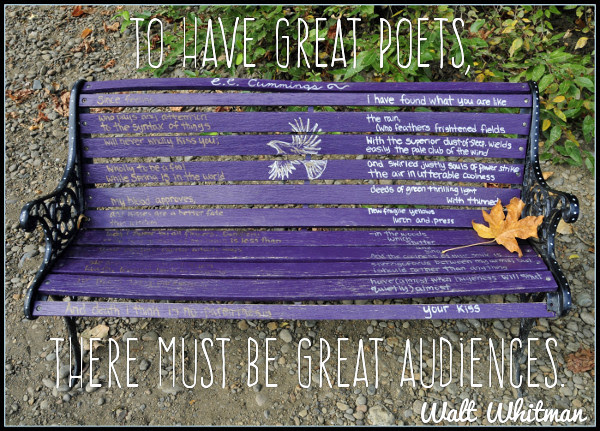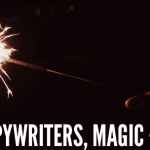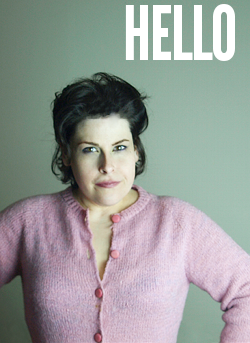To have great poets, there must be great audiences – Walt Whitman
By Jessica Albon

E.E. Cumming’s poetry bench taken by Tony Fischer
I’ve been thinking a lot about audience building lately. For the entirety of my marketing career, we’ve talked about “noise” and the fragmentation of marketing channels and audiences. I entered the professional world already hearing people bemoaning how difficult it was to get attention, how short audience attention spans were, and how fragmented channels had become. You don’t need me to tell you that it’s only gotten worse.
With the pandemic bringing people more online than they’d been before, even spaces that were once relatively quiet now feel like a sci fi apocalyptic marketplace where everyone is shouting, neon signs are flashing, and overwhelm is simply accepted as the norm.
Email marketing has seen a massive resurgence with sales people doing extensive research on your background and then shoehorning random facts about you into their opening lines. Social media’s ability to let random strangers into your world has grown (even) more toxic.
And relationship-building can sometimes feel a bit like a lost art.
From where I stand, shouting isn’t what gets you noticed
It’s still about connecting, doing the work, showing up and being reliably excellent. But it’s also about curation more than ever before. It’s about being led by your curiosity and sharing what you’re learning with people who are curious about the same topics you are.
Audience building means getting crystal clear on who you can help and what they need. It genuinely means captivating their heart and imagination by seeing them as they are and as they could be. More than ever before, planting your flag for who you are (or who your business is) is necessary and I don’t see that changing.
As a very young child, I can remember loving library card catalogs. They were largely replaced with computers when I was a kid, but we still had one as an archive at the Santa Barbara Library. The computers at that time weren’t great at searching — you had to know the full author’s name or the full, exact title — but in a card catalog, you could dive in and shuffle through all of the books the library had.
As the volume of information available at our fingertips has increased, our current search tools have become insufficient. In its current form, Google is no match for what we’re really looking for when we Google something. It can show us results that have been optimized, or results that other people seem to like, but in many cases it can’t really answer the truest nuances of the question on our mind.
I’m curious to see if AI tools can elevate our ability to connect with information. Using my ChatGPT account, I can see glimmers of it — where I’ll ask a question, get a response back that misses the mark, communicate additional nuance and get a more refined (though not always accurate) response.
But I keep coming back to the simple concept — to have great poets, we must have great audiences — to have great content, we must have great audiences. And today’s audience isn’t dropped into your lap pre-existing. You have to build a great audience.
Building great audiences is today’s challenge
In this frenzied marketplace of ideas and voices, we’re in the unenviable position of both being overwhelmed by the sheer volume of information and simultaneously being told to create our own noise. The challenge we’re all facing today? To resist the temptation to shout louder but instead curate our attention and voice.
It’s a game of finesse, not force — where the library card catalog, with its ability to shuffle through ideas at one’s leisure, becomes a more appealing metaphor than an impersonal search engine. We need to embody that card catalog in our audience building — sifting, refining, curating. Ideally, an audience isn’t a group you speak at, but an assembly of people uniquely receptive to your voice.
Our path forward isn’t paved with more neon signs or louder megaphones. It’s about a genuine connection, shared curiosity, and continual growth. Audience building in this era is much like tending to a garden — you have to get your hands dirty, understand the needs of each plant, and provide an environment where they can flourish.
So, let’s look forward to a future where our audiences aren’t mere spectators but engaged participants*, where we’re not just makers of content but curators of experience. This isn’t a call for a return to quieter times, but rather an invitation to embrace the challenges and potential of this bustling marketplace. Let’s not just build an audience, let’s nurture a community.
Blog






